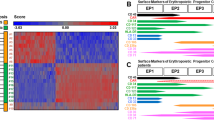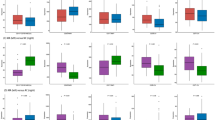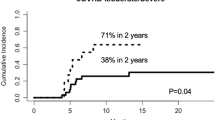Abstract
Frequent apoptosis in the bone marrow of patients with myelodysplastic syndromes (MDS) was demonstrated on frozen sections using the terminal deoxytransferase (TdT)-mediated dUTP nick end labeling (TUNEL) method. The overall mean percentage of TUNEL-positive cells was about 17% in the bone marrow of MDS, while bone marrow from control cases exhibited a mean of 3.4% (P < 0.001). to elucidate the mechanism of apoptosis in bone marrow cells of mds, the expression of fas antigen and fas ligand (fasl) was examined by rt-pcr and immunohistochemistry. all mds cases showed expression of fas mrna (12/12) and most exhibited an expression of fasl mrna (10/12) by rt-pcr. basically, control cases did not show positive signals for fas and fasl mrna, however, a very weak band was detected in three cases (3/10) for fas and in one case (1/10) for fasl mrna by rt-pcr. immunohistochemical examination revealed positive staining for fas (11/12) and fasl (12/12) in the bone marrow of mds, while all the bone marrow samples from control cases were negative for anti-fas (0/15) and for anti-fasl (0/15) antibody. double staining clarified that tunel-positive apoptotic cells expressed fas antigen on the cell surface, although not all fas-positive cells were tunel positive. the fas-positive cells of mds bone marrow included hematopoietic cells expressing cd34 antigen, neutrophil elastase, a marker for myeloid series of cells, or glycophorin a, a marker for erythroid cells. however, cd68-positive cells which were macrophage lineage cells, did not express fas antigen strongly. in contrast, positive staining for fasl was detected in hematopoietic cells and cd68-positive cells in the bone marrow of mds. these results suggest that the fas–fasl system plays an important role in inducing apoptosis in the bone marrow of mds and works in an autocrine (hematopoietic cell–hematopoietic cell interaction) and/or paracrine (hematopoietic cell–stromal cell interaction) manner.
This is a preview of subscription content, access via your institution
Access options
Subscribe to this journal
Receive 12 print issues and online access
$259.00 per year
only $21.58 per issue
Buy this article
- Purchase on Springer Link
- Instant access to full article PDF
Prices may be subject to local taxes which are calculated during checkout
Similar content being viewed by others
Author information
Authors and Affiliations
Rights and permissions
About this article
Cite this article
Kitagawa, M., Yamaguchi, S., Takahashi, M. et al. Localization of Fas and Fas ligand in bone marrow cells demonstrating myelodysplasia. Leukemia 12, 486–492 (1998). https://doi.org/10.1038/sj.leu.2400980
Received:
Accepted:
Published:
Issue Date:
DOI: https://doi.org/10.1038/sj.leu.2400980
Keywords
This article is cited by
-
Treatment with the apoptosis inhibitor Asunercept reduces clone sizes in patients with lower risk Myelodysplastic Neoplasms
Annals of Hematology (2024)
-
Comparative study of IgG binding to megakaryocytes in immune and myelodysplastic thrombocytopenic patients
Annals of Hematology (2021)
-
Hypomethylating agents in combination with immune checkpoint inhibitors in acute myeloid leukemia and myelodysplastic syndromes
Leukemia (2018)
-
Thrombocytopenia in MDS: epidemiology, mechanisms, clinical consequences and novel therapeutic strategies
Leukemia (2016)
-
Deregulation of innate immune and inflammatory signaling in myelodysplastic syndromes
Leukemia (2015)



